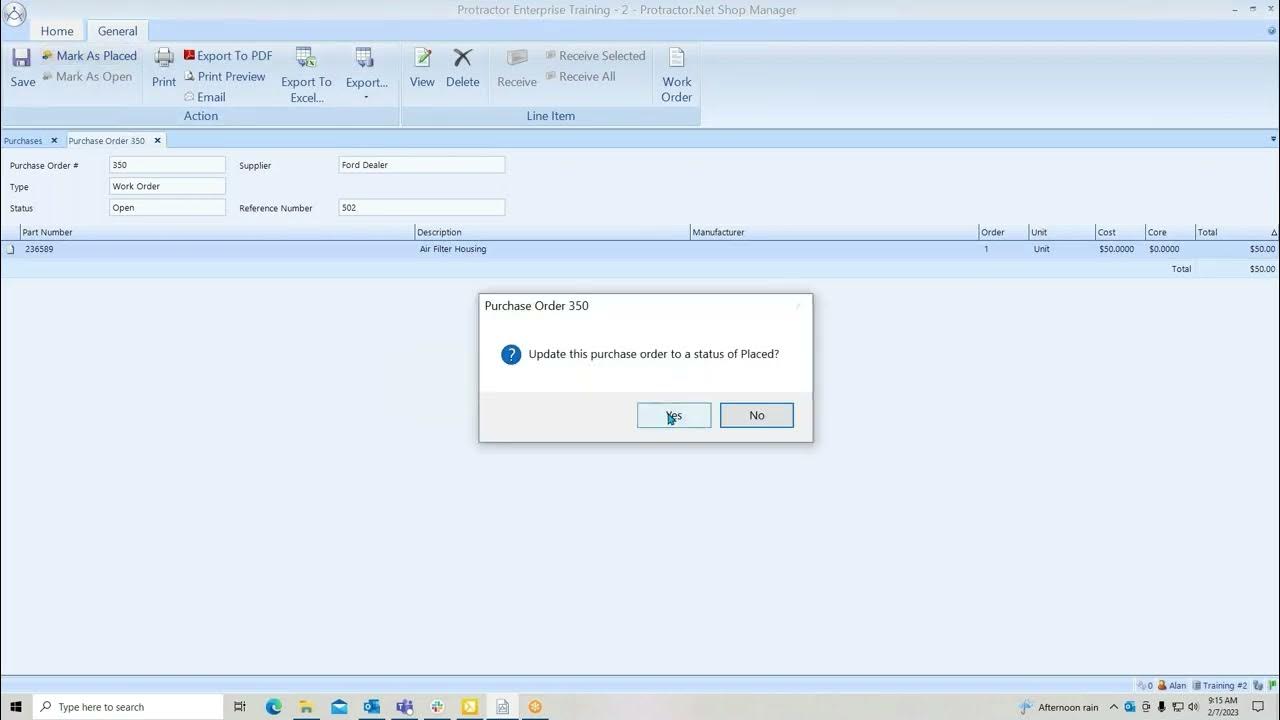Taking an order
Summary
TLDRThis video script provides a detailed guide for waitstaff on how to take orders efficiently and professionally. Key steps include ensuring readiness with equipment, greeting guests politely, and confirming order preferences. Waitstaff are advised to be knowledgeable about the menu, including dietary and allergy considerations, and to write clearly. The script emphasizes the importance of clear communication, avoiding abbreviations, and maintaining an organized approach when taking orders. Additionally, it highlights the value of thanking customers and ensuring proper service throughout the process.
Takeaways
- 😀 Ensure your pen is working and your order book or electronic system is ready before approaching the table.
- 😀 Note the table number, the number of covers, and the time the order is being taken.
- 😀 Politely ask if you may take the order when you arrive at the table, and give the customer extra time if needed.
- 😀 Familiarize yourself with the position numbers to correctly identify who ordered which dish.
- 😀 Be prepared to answer questions about the menu, especially regarding dietary restrictions or allergies.
- 😀 Always double-check ingredients for allergy concerns and never guess if you're unsure.
- 😀 Write the order clearly to ensure readability and proper transcription to the carbon copy or electronic system.
- 😀 Be trained on the use of electronic ordering systems if applicable, and ask for preferences on specific dishes.
- 😀 Avoid using abbreviations when talking to customers (e.g., do not use 'veg' for vegetables).
- 😀 Confirm the order with the customer, remove unnecessary items from the table, and ensure proper cutlery is ready for the meal.
Q & A
What should you do before starting to take an order?
-Before taking an order, ensure your pen is working, your order book has enough pages, or your electronic ordering system is ready. Also, make sure you have noted the table number, the number of covers, and the time at which the order is being taken.
How should you approach the table when taking an order?
-As you approach the table, ensure you've noted the table number, the number of covers, and the time of the order. When you arrive, say 'excuse me' and ask if you may take their order.
What should you do if the customer asks for more time?
-If the customer asks for more time, give them a few extra minutes, but avoid leaving them waiting too long.
What is important to know before taking the order?
-You should know the position numbers before taking the order. Each establishment may have a different system, but it should allow waiters to identify who ordered which dishes.
How should you respond if a customer asks about the soup of the day?
-If a customer asks about the soup of the day, you should be prepared to answer clearly and provide details about it, such as the specific soup available (e.g., leek and potato).
Why is it important to be prepared to answer questions about the menu?
-It’s important to answer menu questions because you may need to accommodate for specific dietary or allergy requirements. You must know the ingredients to ensure customers' safety and satisfaction.
What should you do if you are unsure about which ingredients may cause an allergic reaction?
-If you're unsure about which ingredients may cause an allergic reaction, you should double-check and never guess. It's crucial to provide accurate information to avoid any health risks.
What should you keep in mind when writing the order?
-When writing the order, make sure it is legible so others can read it and it transcribes correctly onto the carbon copy. If you're using an electronic ordering system, ensure you are familiar with how to use it properly.
How should you handle special preferences for dishes, like steak doneness?
-Always ask for preferences on specific dishes, such as how a steak should be cooked (e.g., medium rare). Make sure to note these preferences to fulfill the customer’s request.
What is the importance of using descriptive language when suggesting extras?
-Using positive and descriptive language when suggesting extras, such as vegetables or sides, enhances the customer's experience and helps them make informed choices. It encourages upselling without being pushy.
What should you do when finishing the order-taking process?
-When finishing, repeat the order for confirmation, remove the menus, and use a service tray or plate to clear unnecessary cutlery. Be sure to thank the customer before leaving.
Outlines

This section is available to paid users only. Please upgrade to access this part.
Upgrade NowMindmap

This section is available to paid users only. Please upgrade to access this part.
Upgrade NowKeywords

This section is available to paid users only. Please upgrade to access this part.
Upgrade NowHighlights

This section is available to paid users only. Please upgrade to access this part.
Upgrade NowTranscripts

This section is available to paid users only. Please upgrade to access this part.
Upgrade NowBrowse More Related Video

Bybit Tutorial for Beginners (How to Trade Crypto on Bybit)

How to Take an Order in Restaurant || Order Taking Skills

Purchase Orders

Схема построения технического анализа. Урок 1-1

Guide Spiral Abyss 5.7 - Ft. Skirk Bintang 4 & Mavuika Overload Bintang 4 - Lapakhuda.com

Curso Odoo 2024-06-04 - Modulo Ventas
5.0 / 5 (0 votes)